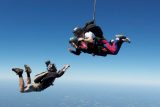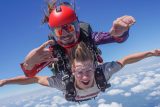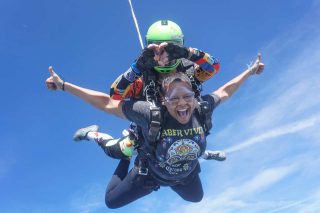5 Tandem Skydiving Safety Stats You Should Know
Tandem Skydiving
1 year ago
Tandem Skydiving Safety Statistics
Welcome to the exhilarating world of tandem skydiving! There’s nothing quite like jumping from a perfectly good airplane and rushing toward the earth below, which is why we hold skydiving near and dear to our hearts. Amidst the excitement and adrenaline, safety stands as our utmost priority.
Is skydiving safe? This article will dive into five tandem skydiving safety facts we think everyone should know. We’ll explore accident rates, equipment standards, and just how professional the dude or dudette leaping out of an airplane with you is.
We believe knowledge builds confidence – let’s get into some skydiving safety statistics!
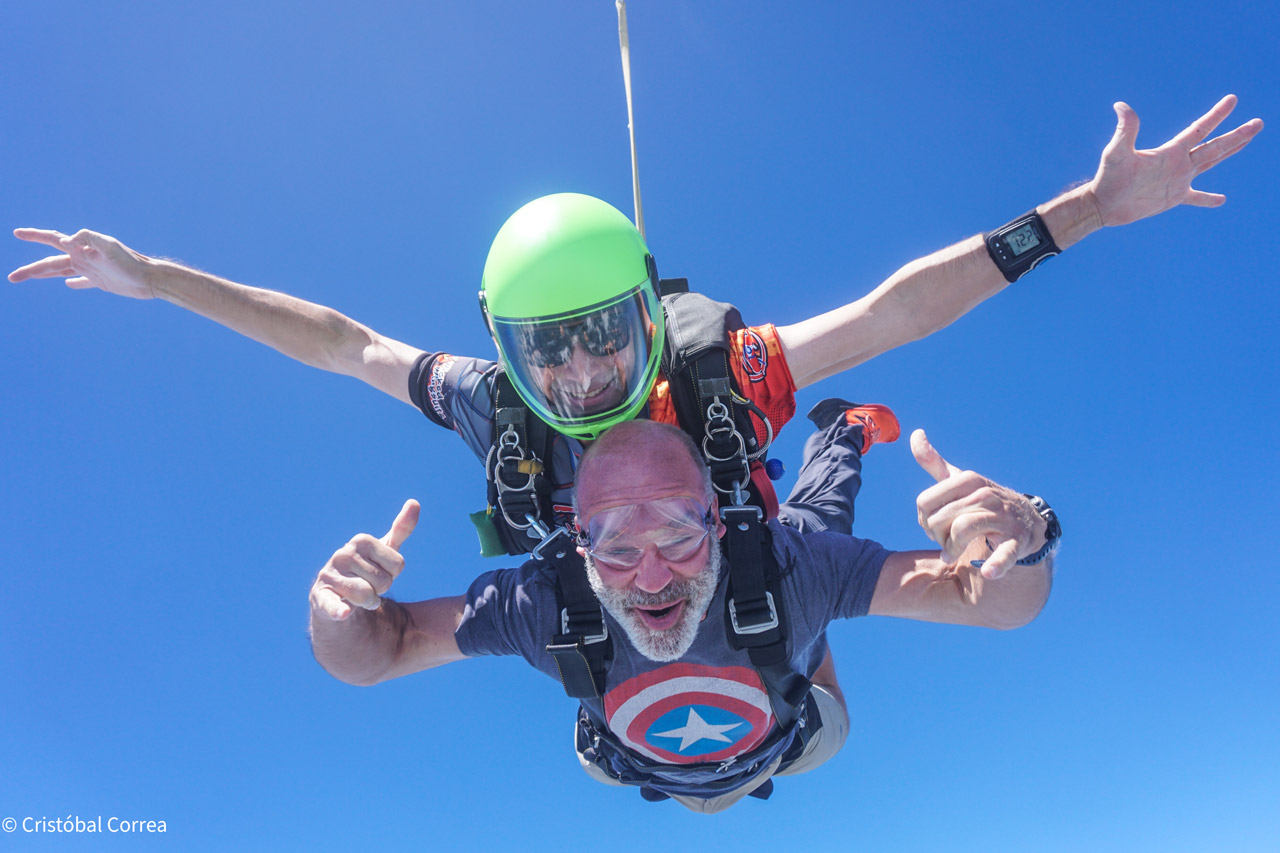
1: 3.65 Million Skydives Happened In 2023
Is skydiving dangerous? “High-risk” or “extreme” does not necessarily equate to dangerous, per se. It’s a huge misconception that skydiving is reserved for the crazy and reckless adrenaline-seekers of the world. Spending the weekend jumping from airplanes is pretty common, and the estimated 3.65 million skydives made in 2023 prove it!
People of all sorts of professions skydive regularly. Teachers, first responders, students, cooks, lawyers, mail carriers … and so much more use skydiving as their solace! The unification of the skydiving community is a pinnacle component that makes people fall in love with skydiving.
2: 0.000274% of 2023 Skydives Were Fatal
Every single loss in the skydiving community resonates deeply and leaves a mark on the hearts of all of us who share in the love for this incredible sport.
The crazy percentage above means that for the estimated 3.65 million skydives made in 2023, 10 resulted in skydiving fatalities. That’s 0.27 deaths per 100,000 jumps or 1 in 370,000.
Who looks after skydivers? Day to day, the skydiving community looks after each other! We pride ourselves on practicing a culture of safety for our own sake and for the other members of our sky-fam worldwide. Bigger picture, the United States Parachute Association (USPA) and Federal Aviation Administration (FAA) are the two governing bodies for us “wild” skydivers.
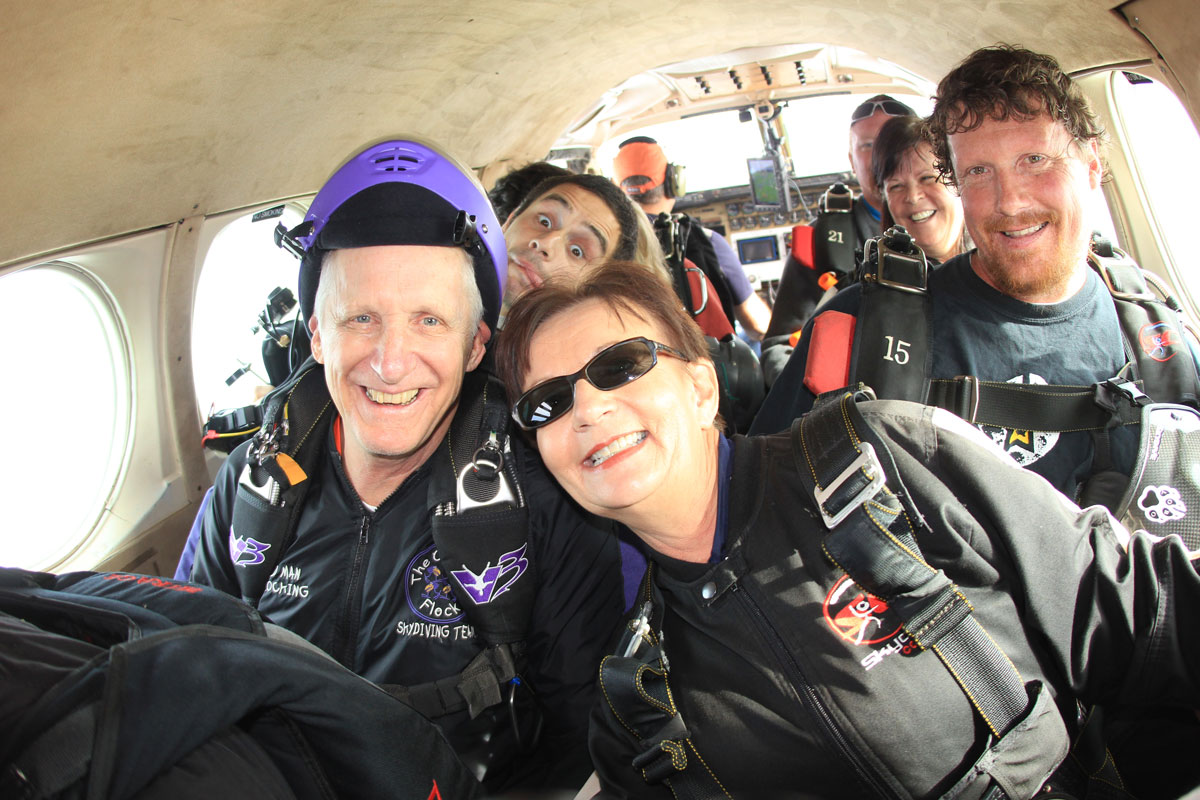
3: Skydiving Technology Is Sophisticated
Veteran skydivers and tandem skydiving students understand the inherent risk that comes with the awesomeness of the sport. The thing many people don’t realize about the risk associated with jumping from an airplane is just how calculated it is. There are two incredible pieces of technology inside every single tandem skydiving rig: the AAD and the RSL.
An Automatic Activation Device (AAD) is a small computer fastened inside the rig that is designed to deploy the reserve parachute at a preset altitude if, for any reason, the jumper has not done so. The AAD works on an air pressurization system and is able to calculate the altitude of the jumper. Along with the altitude, the AAD can tell how fast (the velocity) the jumper is falling. If the jumper is going too fast at too low of an altitude – indicating to the AAD that something is wrong – the AAD will deploy the reserve canopy.
What happens if you pass out while skydiving? You guessed it: the AAD activates and deploys the reserve. AAD’s save lives!
A Reserve Static Line (RSL) is a lanyard that acts sort of like a tripwire – when the main canopy is released by the jumper, the RSL pulls the reserve canopy pin. The purpose is to initiate deployment of the reserve canopy instantaneously, rather than waiting for the jumper to pull the reserve handle themselves. (As a best practice, though, jumpers are trained to always complete their emergency procedures by pulling the reserve handle themselves. Muscle memory saves lives, too!)
*Fun fact: BASE jumping is riskier than skydiving, as BASE jumpers do not have reserve parachutes, and therefore, no AADs or RSLs.

4: Tandem Skydiving Instructors Have A LOT of Training
Tandem skydiving instructors go through rigorous training and must meet multiple requirements before earning the privilege of taking first-timers flying. Before starting their training, they must, at minimum:
- Be 18 or older
- Have previously held a USPA instructional rating
- Have no less than 500 skydives
- Hold a USPA D-license
- Have at least three years of skydiving experience
- Have an FAA Class III Medical certification
Most of all, tandem instructors place your safety (and subsequently, theirs) at the forefront on every single skydive. They’re passionate individuals who have a fervor for the sport and for sharing the freedom of it with others, just like you!
So, is tandem skydiving safer than solo jumping? Yeppers! Why? Tandem skydiving means you’re attached to a professional skydiving instructor. Jumping from a plane with someone who has likely done it thousands of times, as opposed to by yourself (who is most likely embarking on their first jump) is statistically safer.
5. Skydiving Safety Stats Compared to Other Activities
Is tandem skydiving dangerous when compared to other extreme sports? If by “extreme sports” you mean daily tasks … no, tandem skydiving is not more dangerous! Not to be morbid, but it’s more probable you’ll get into a fatal car accident on your way to the dropzone for your tandem skydive than it is to be hurt on your tandem skydive. How’s that for a sobering thought?
- Odds of fatal choking: 1 in 2,659
- Car crash: 1 in 93
- Bicycle accident: 1 in 3,546
- Falling: 1 in 98
- Skydiving: 1 in 370,000
At Skydive Carolina, tandem skydiving involves strict adherence to safety standards, best-of-the-best gear and equipment, proper instructor training and experience, and professional guidance and oversight – which opens the door for first-timers to enjoy the fun and exhilarating adventure that is human flight! We proudly take meticulous measures to ensure safety is a top priority on every single jump. Have questions? Feel free to give us a call! We can’t wait to have you. Blue skies!

